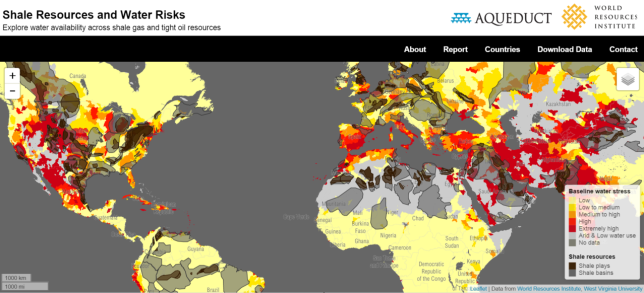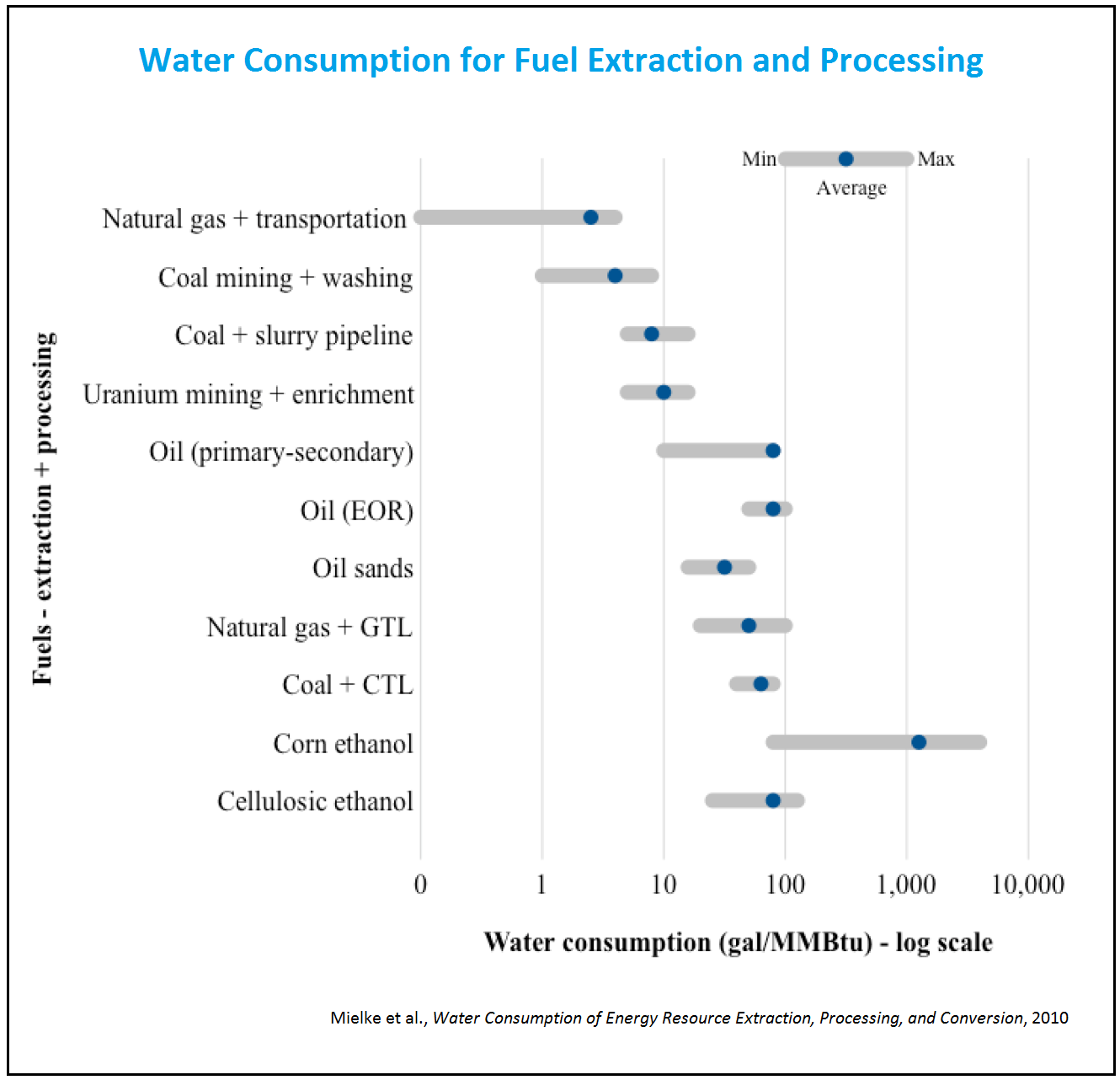On September 12 World Resources Institute had an event to unveil their new report on the fresh water impacts of shale gas development. The WRI report examines the availability of freshwater across shale plays globally. Shale resources of natural gas, natural gas liquids and tight oil are extracted using hydrofracking techniques that require substantial quantities of water for every well drilled. The report offers the first global overview that cross references fresh water availability against shale gas resources. The report highlights the need to be aware that many of the world’s shale plays are in water constrained regions and that water constraints can potentially limit the ability to develop the resources.
The report draws important conclusions and recommendations around water governance, risk assessments and operator transparency before drilling begins. The final recommendation in the report highlights the need for drillers to limit the use of freshwater in their hydrofracking activities.
The WRI report utilizes geospatial analysis using data from WRI’s own Aqueduct Water Risk Atlas combined with data on shale resources provided by West Virginia University and the National Energy Technology Laboratory (NETL). They have created an interactive map tool that enables the user to examine shale plays globally and visually observe the water risk assessments for that region. The report acknowledges the wide variability in water usage on a given drilling site and the wide seasonal fluctuations in water availability in any given area. The report acknowledges the complexity in determining water allocations and is not meant to offer guidance in determining the appropriateness of drilling in any given area but is meant as an informative tool to help offer a birds-eye view of the natural resources.
The report does help identify priority locations worldwide where freshwater management will be most critical if shale resources are developed. The report also helps reveal potential business risks associated with freshwater availability to companies and build the case for corporate water stewardship and early source-water assessment.
The speakers at the event were Paul Reig, one the authors of the report, along with Francis O’Sullivan from MIT, and Kelly Kryc, from the U.S. State Department.
The topic of non-potable water use was addressed in depth in the discussion because hydrofracking does not require the use of freshwater and can be done with all manner of low quality water such as brine, salt water, waste water, and produced water. While drillers have traditionally used whatever water was cheapest and easiest to acquire, there is now increased competition for water in arid locations such as the American west and increased public scrutiny of drilling impacts. The drilling industry has become aware of business opportunities for using low quality water and for water recycling as well as the reputational importance of not disrupting local fresh water resources. The report authors discussed the opportunity to map brine resources as an additional data layer in the ongoing project.
The discussions also highlighted the need to recognize the relative water demands from various energy resources and to put them into context. While hydrofracking does use significant water (millions of liters per well), that water use is concentrated in a very short time period, perhaps just one day while the well is fracked. Additional wells in the same region will continue to demand water but only for one day each. In contrast, large coal and nuclear power plants consume far greater quantities of water for cooling and they do it every day for decades. Biofuels also consume far greater aggregate quantities of water than hydrofracking when irrigating the biofuel crops. Local seasonal variability in hydrological conditions also plays a major role in determining the availability of water for drilling purposes.
The WRI report highlights the need for concern about water use in hydrofracking in arid regions. For the hydrofracking industry to expand its operational reach they need to continue to improve their technology and methods in order to minimize their impacts on local water supplies. Corporate water stewardship programs will also be highly beneficial in establishing access to needed water resources while maintaining good relations with other water users and improving the bottom line.

